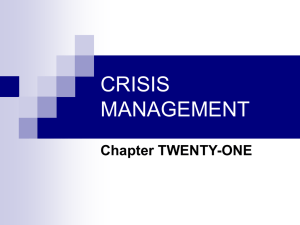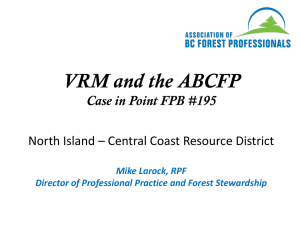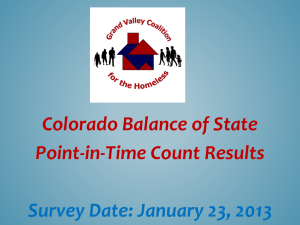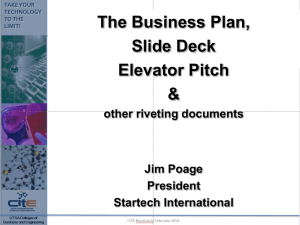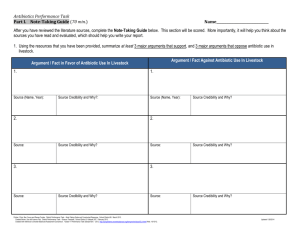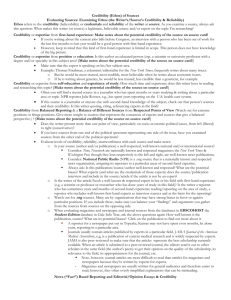Measuring Human Resources - Human Resources Institute of New
advertisement
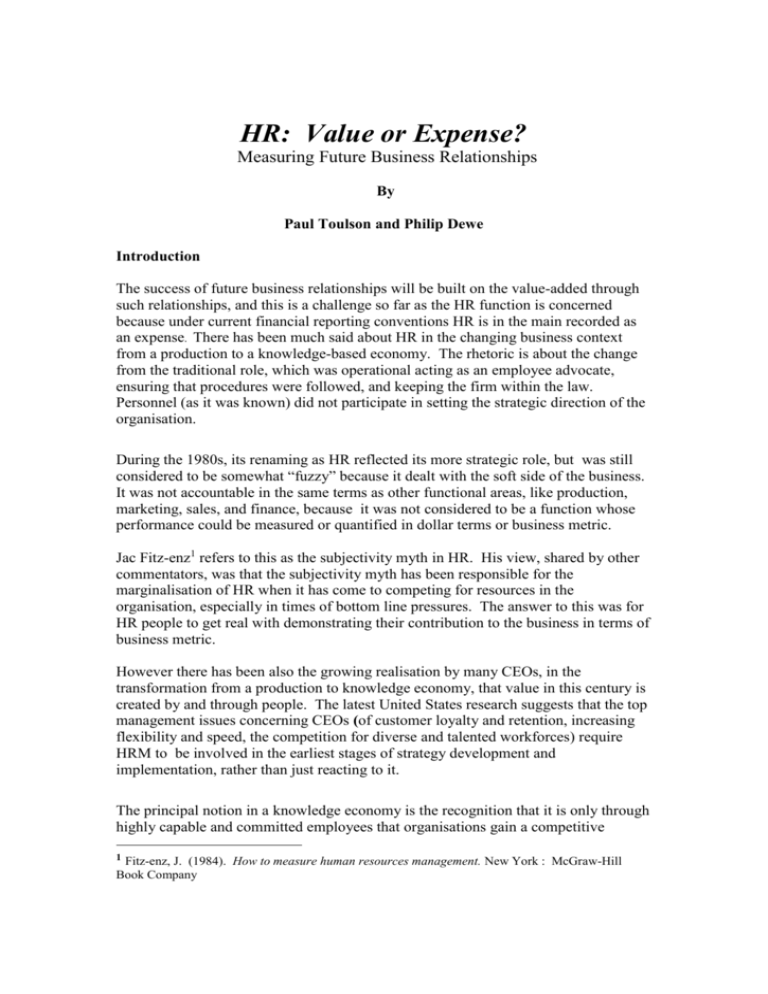
HR: Value or Expense? Measuring Future Business Relationships By Paul Toulson and Philip Dewe Introduction The success of future business relationships will be built on the value-added through such relationships, and this is a challenge so far as the HR function is concerned because under current financial reporting conventions HR is in the main recorded as an expense. There has been much said about HR in the changing business context from a production to a knowledge-based economy. The rhetoric is about the change from the traditional role, which was operational acting as an employee advocate, ensuring that procedures were followed, and keeping the firm within the law. Personnel (as it was known) did not participate in setting the strategic direction of the organisation. During the 1980s, its renaming as HR reflected its more strategic role, but was still considered to be somewhat “fuzzy” because it dealt with the soft side of the business. It was not accountable in the same terms as other functional areas, like production, marketing, sales, and finance, because it was not considered to be a function whose performance could be measured or quantified in dollar terms or business metric. Jac Fitz-enz1 refers to this as the subjectivity myth in HR. His view, shared by other commentators, was that the subjectivity myth has been responsible for the marginalisation of HR when it has come to competing for resources in the organisation, especially in times of bottom line pressures. The answer to this was for HR people to get real with demonstrating their contribution to the business in terms of business metric. However there has been also the growing realisation by many CEOs, in the transformation from a production to knowledge economy, that value in this century is created by and through people. The latest United States research suggests that the top management issues concerning CEOs (of customer loyalty and retention, increasing flexibility and speed, the competition for diverse and talented workforces) require HRM to be involved in the earliest stages of strategy development and implementation, rather than just reacting to it. The principal notion in a knowledge economy is the recognition that it is only through highly capable and committed employees that organisations gain a competitive 1 Fitz-enz, J. (1984). How to measure human resources management. New York : McGraw-Hill Book Company advantage. The realisation that knowledge has become a critical appurtenance for gaining a competitive advantage in the new economic landscape has resulted the recognition of the value of people The CEO of Hewlett Packard emphasised this in a recent address to tertiary graduates by saying “…the most magical and tangible and ultimately the most important ingredient in the transformed landscape is people” and this has been substantiated by research results that unequivocally suggest the importance of human capital for firm performance. Bontis, Dragonetti, Jacobsen, & Roos (1999)2 suggest that there are a range of tools available in the metrics of managing intangible resources, the most of which are human resource accounting, economic value-added, the balanced scorecard, and intellectual capital. Each of these approaches is based on the recognition that the value-creating capacity of an enterprise is based on the knowledge and capabilities of its people. There has been little research undertaken into HRA in New Zealand. That which has been undertaken has been the subject of student research. So we thought it was timely to do some baseline research. The Present Study So the aim of this paper is to give you a brief synopsis of the results of a baseline study that we conducted on samples of the memberships of HRINZ, Institute of Chartered Accountants, and the Institute of Directors to establish: (a) What New Zealand organisations are doing to measure HR results? (b) How critical do they consider HR measurement to their management and success? This benchmark study was designed to capture not just what managers perceptions were about the importance of measuring HR, but also to document the techniques that organizations are using and the extent to which different techniques should be used. The sample consisted of 517 members of the three participating Institutes grouped in to the following three broad groupings: HR Management (175 or 33.8%); accounting/finance management (108 or 20.9%): and, senior line management (234 or 45.3%). Results A number of points are clear from the analysis of the survey data. In Part 2 of the survey form, the respondents were asked to rate 16 statements about the importance of measuring human resources. The top five reasons for measuring human resources are expressed as a percentage of the total sample. These percentages reflect the number of respondents who either agreed or strongly agreed that the reason reflects their organization’s thinking: Human Resources should be accountable just like every other function (89.6%). 2 Bontis, N., Dragonetti, N.C., Jacobsen, K., & Roos, G. (1999). The knowledge toolbox: A review of the tools available to measure and manage intangible resources. European Management Journal, 17(4), 391-401. The knowledge and skills of our people is our most important source of sustained competitive advantage (84.7%). Understanding the value of our people focuses us on our future human resource needs, which is crucial both for setting long term strategies and for helping us achieve them (76.7%). Measurement of human resources gives management needed information about the people resources in the organization and if the resources are there to support the business strategies (74.3%). Through measuring the effectiveness of a particular programme and the impact it will have on the level of knowledge within the organization, management can make better informed decisions. (72.2%). Almost half (47.6%) of those surveyed believed that the measuring of human resources was very or extremely important to their organization. Not surprisingly measuring human resources was also perceived, by those surveyed, to be very important across a range of levels within the organization from those in human resource management (50.0%), to the CEO (44.4%), to partners (33.2%) and senior management (32.8%). A factor analysis of the 16 statements relating to the importance of measuring human resources suggested that there are in fact two principal reasons that stand out as reflecting organizational thinking on why measuring human resource management is important. They are: “measurement reflects the strategic and competitive importance of human resources” and “to achieve credibility human resource management must be expressed in financial terms.” Nevertheless to many of those surveyed “current human resource measures lack precision” (58.8%) or “current human resource measures are not widely accepted “ (50.56%). Three principal reasons appear to justify why organizations do not measure human resources. These are: “human resource measures lack precision,” “ human resource measures are too difficult,” and “human resource people lack expertise.” From the literature we compiled a list of 32 possible measures that organizations may use to measure human resources. In the third part of the questionnaire, participants were asked to consider each measure and indicate if their organization is currently using the measure. Rank ordering across the whole sample, the six most frequently used measures were: accident frequency rates (60.3%), client satisfaction surveys (60.1%), absenteeism rates (56.3%), training and education costs (56.3%), cost of people (53.9%) and competencies (53.2%). The point to note here is that these results reflect what is being measured and not how the information from such measures is being used. The point to note here is that these results reflect what is being measured and not how the information from such measures is being used. Not surprisingly, the most infrequently used measures may well reflect some of the difficulties associated with developing appropriate methods and perhaps, the significance given to the human resource function and the idea that its activities should be measured in someway. Most of the organizations surveyed do not, for example, measure training cost, return on investment in human capital, value added per employee, time to fill jobs, return on training and seniority. Again could it be that failure to utilise such measures simply reflects how little emphasis is given to the evaluation of many human resource activities once more illustrating the vicious circle that human resource people find themselves in when it comes to establishing their credibility and their contribution to the “bottom line.” By not making such measures human resource people cannot fully establish their credibility and because they cannot establish their credibility human resource people cannot get the resources to be able to develop their measurement skills. Three different types of human resource measures can be identified. These include: “human resource costs/information,” “return on investment,” and “individual attributes/potential.” In terms of how important each measurement type is those surveyed believed that measuring “individual attributes/potential” to be more important than “return on investment” or “human resource costs/information.” Finally some comparisons were made across the three groups: human resource managers, line managers and accounting/finance managers. In the main, when these three groups were compared in terms of their attitudes towards measuring human resources then human resource managers (not surprisingly) where significantly more likely to believe in the importance of such measures and less likely to perceive barriers to measurement than accounting/finance managers. It is also interesting to note that at times line managers were more positive in their attitudes towards measuring human resources than accounting/finance managers. The question that arises from these results is “what has to be done to change the attitudes of accounting and finance managers when it is these managers who possess many of the necessary skills to aid measurement and develop innovative practice?” Some Conclusions All in all these results suggest that the measuring of human resources is viewed as important. The reason for this view can be attributed to the growing strategic importance of human resource management and the need for human resource managers to establish their credibility by making the function more accountable in financial terms. The difficulties of human resource managers achieving this should not be underestimated. They are perceived as not having the necessary expertise to carry out appropriate measurement and that many of the measures used lack precision and are too difficult. Nevertheless different measurement approaches are used. Whether they are actually providing human resource information that establishes the importance of the human resource function in financial terms or its credibility is a moot point. The difficulties are made more difficult by the attitudes of others in the organization particularly those accounting and finance managers who are less likely to see the importance of such measurement. Nevertheless the importance of measuring human resources seems established. It is now for human resource managers to establish that measurement can be done, is within their expertise, and that if resource based strategies do reflect an organizations only competitive advantage, then to convince others that measuring human resources is crucial to the success of such strategies and the survival of the firm.
